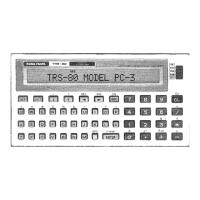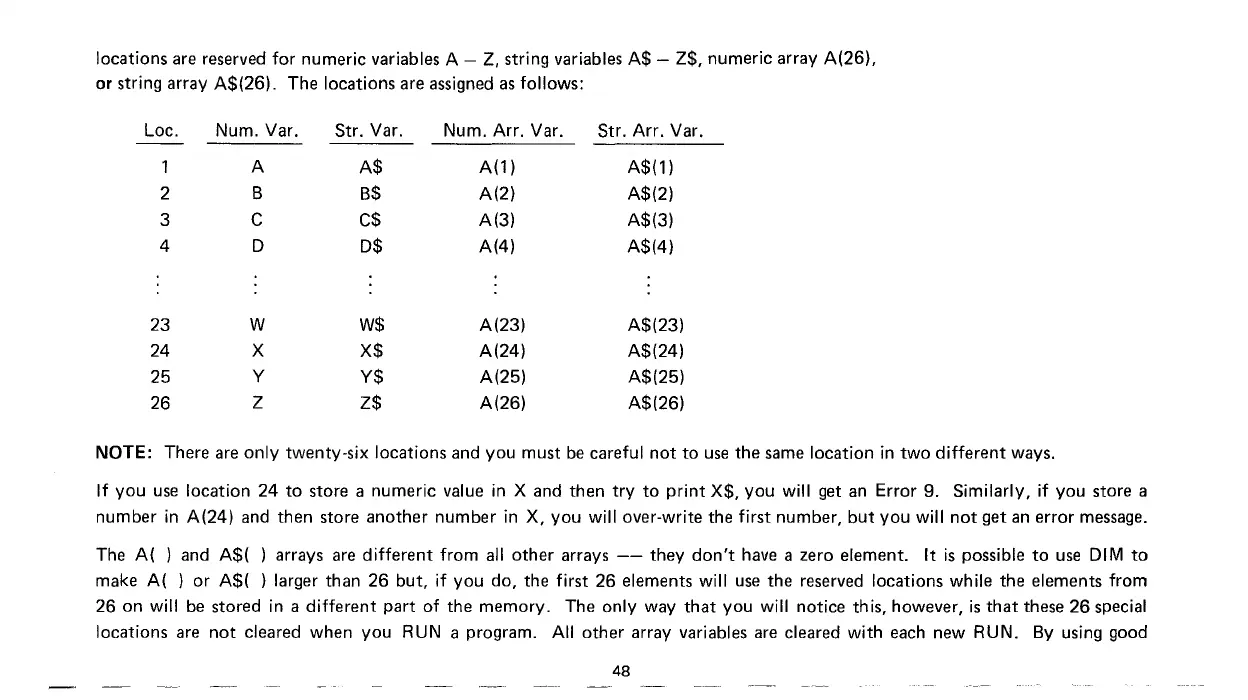locations
are
reserved
for
numeric variables A - Z, string variables
A$
- Z$, numeric array
A(26),
or
string array
A$(26).
The locations are assigned
as
follows:
Loc. Num. Var. Str. Var. Num.
Arr.
Var. Str.
Arr.
Var.
1
A
A$
A(1)
A$(1)
2 B B$
A(2)
A$(2)
3 C C$
A(3)
A$(3)
4 D
D$
A(4)
A$(4)
23 W
W$
A(23)
A$(23)
24 X
X$
A(24)
A$(24)
25
Y
Y$
A(25)
A$(25)
26
Z
Z$
A(26)
A$(26)
NOTE: There
are
only
twenty-six
locations and you must
be
careful
not
to
use
the
same
location in
two
different
ways.
If
you
use
location
24
to
store a numeric value in X and then
try
to
print
X$,
you
will
get
an
Error 9.
Similarly,
if
you store a
number in
A(24)
and
then store another number in
X,
you
will
over-write the
first
number,
but
you
will
not
get
an
error
message.
The
A(
) and
A$(
) arrays
are
different
from
all
other
arrays
--
they
don't
have
a zero element.
It
is
possible
to
use
DIM
to
make
A(
)
or
A$(
) larger than 26
but,
if
you
do, the
first
26 elements
will
use
the reserved locations while the elements
from
26 on
will
be
stored in a
different
part
of
the memory. The
only
way
that
you
will
notice this, however,
is
that
these
26
special
locations
are
not
cleared when
you
RUN a program.
All
other
array variables
are
cleared
with
each
new RUN. By using good
48

